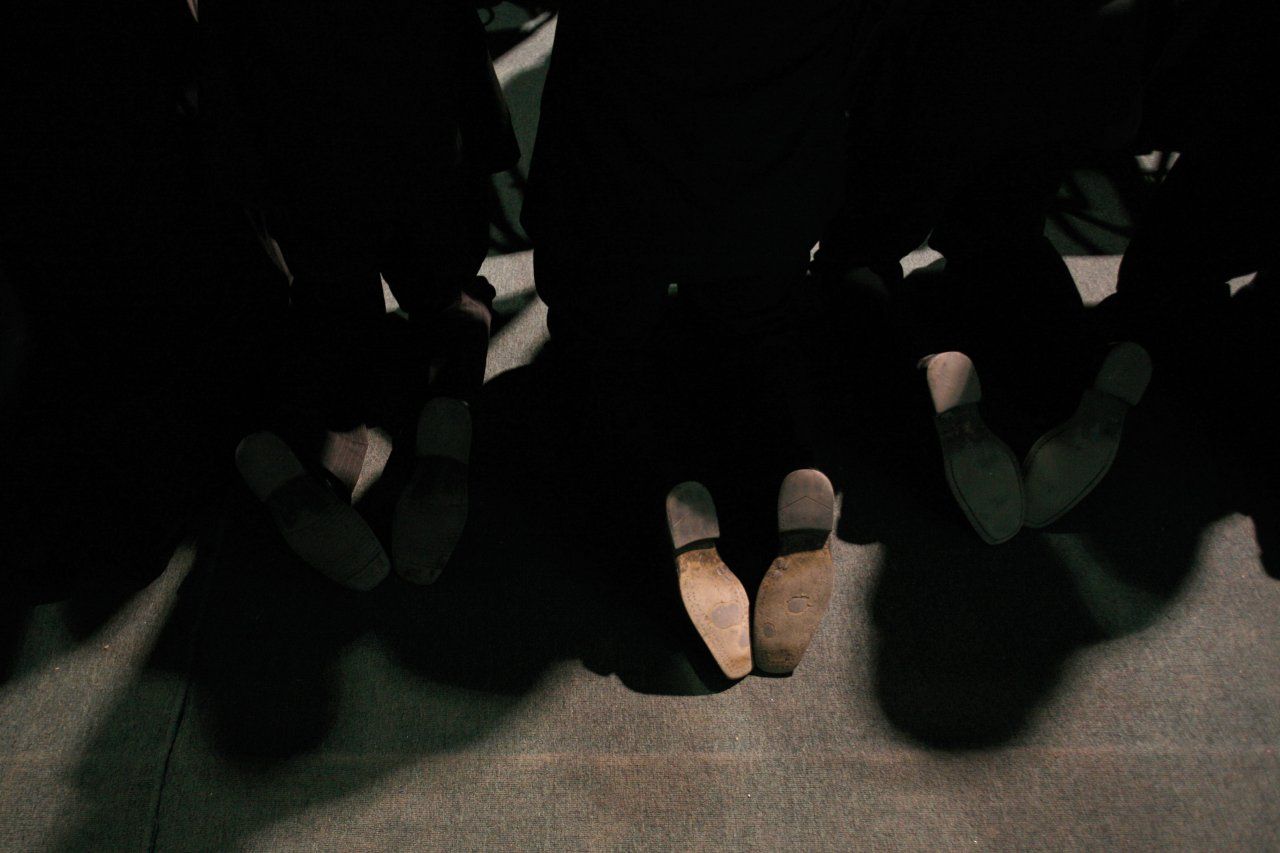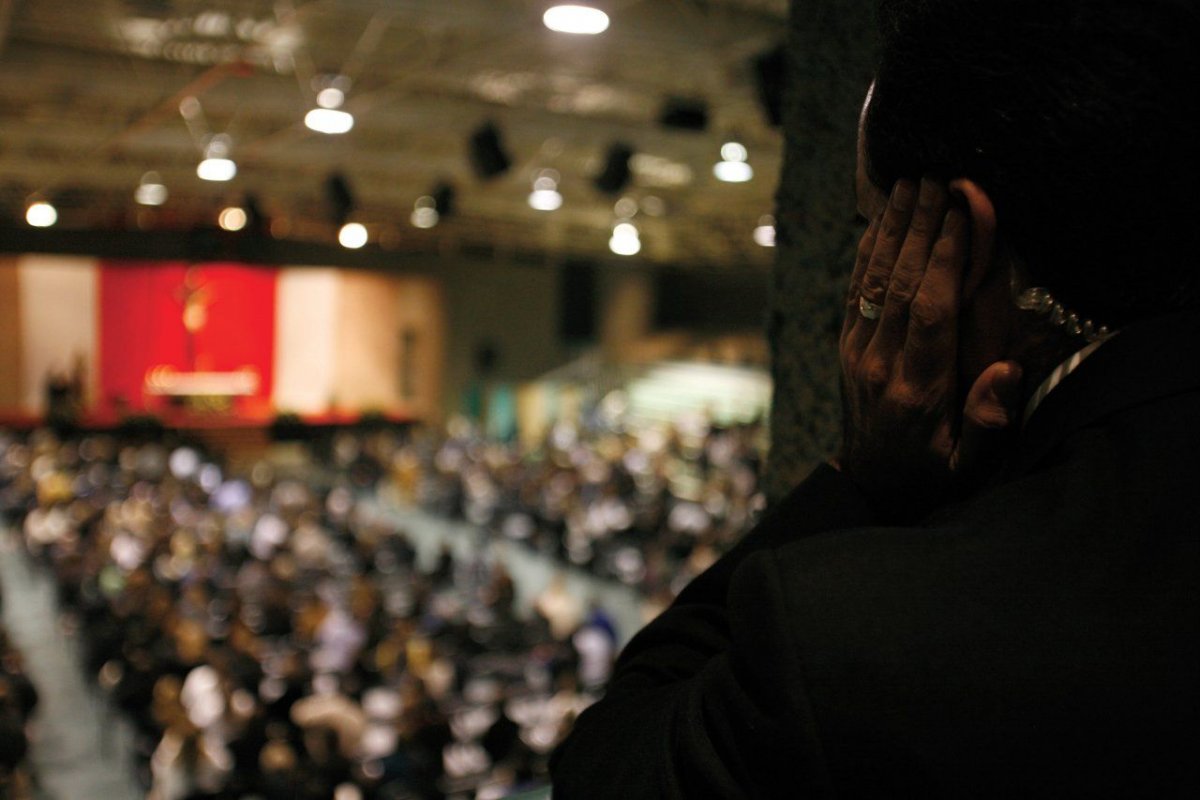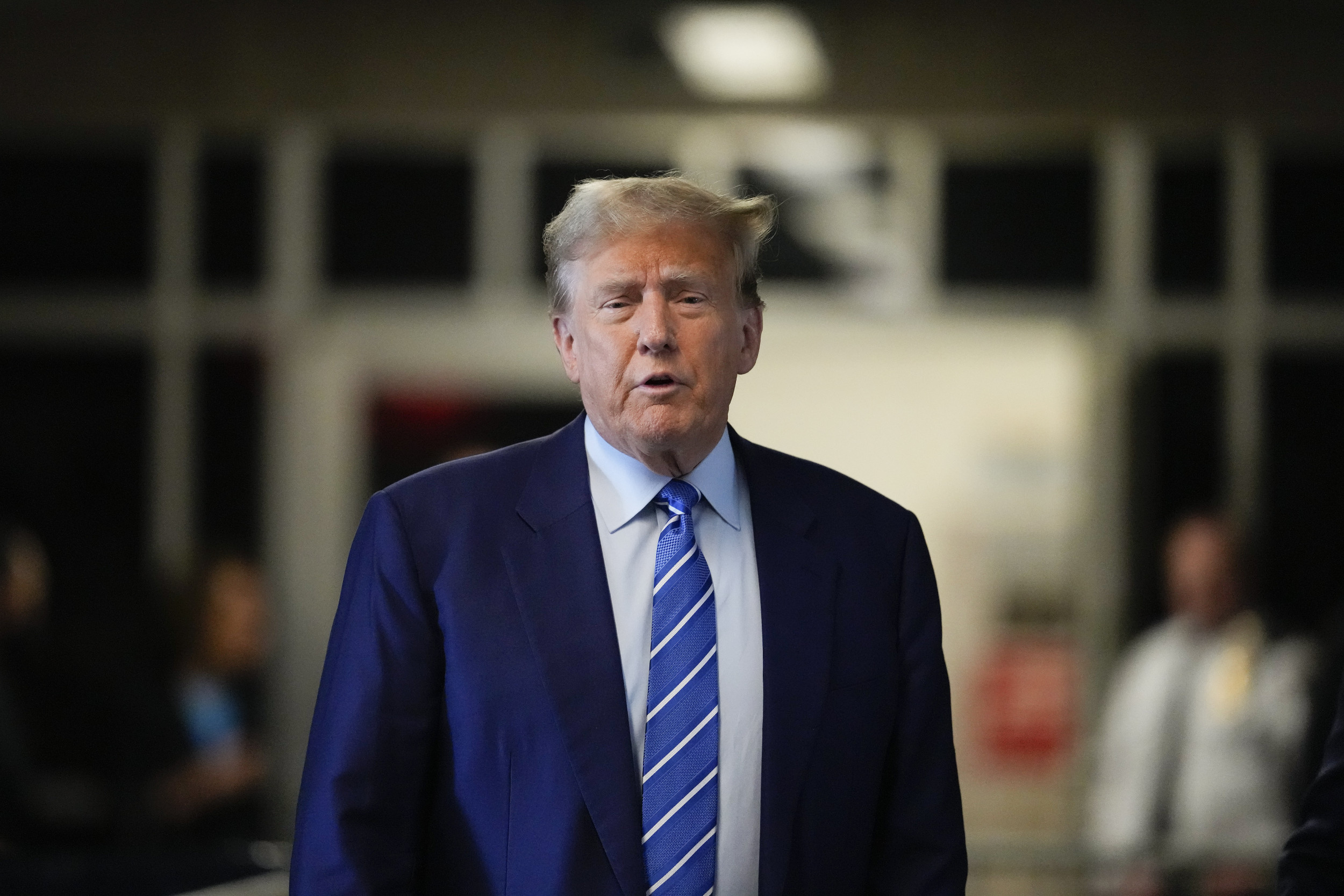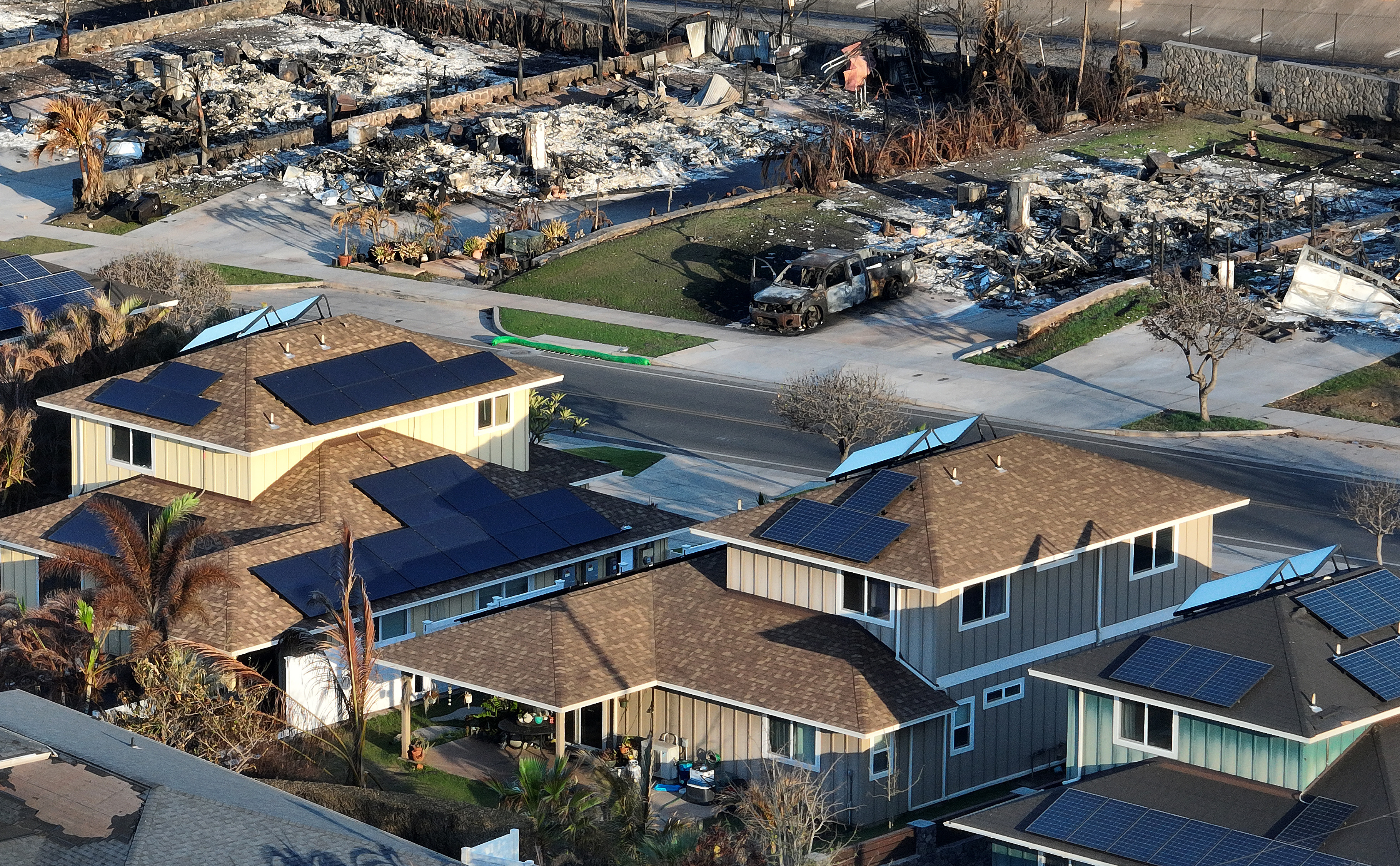
Marcial Maciel Degollado, a priest from Mexico with an extravagant name, was the greatest fundraiser for the postwar Catholic Church and equally its greatest criminal.
"A life ... out of moral bounds," is how Pope Benedict XVI described Maciel in a 2010 interview, two years after Maciel's death. A "wasted, twisted life."
And a life that exposed shocking flaws in the Vatican and the papacy. The saga of Father Maciel opens a rare view onto the flow of money in the Roman Curia across the last half century, a time during which his rise to power and late-life crash into scandal stained the campaign for John Paul II's sainthood and became a quagmire for Benedict XVI.
In the late 1940s, Maciel began sexually plundering teenage seminarians in the religious order he founded, the Legion of Christ. He also shuttled between Mexico, Venezuela, and Spain, courting benefactors like a senator with silk between the fingers, portraying his Legionaries as a force of resurgent orthodoxy, himself a fearless foe of communism.
That message had booming resonance in Mexico, a heavily Catholic country seared by memories of lethal anticlerical persecutions set in motion by the Calles regime in the 1930s, a milieu powerfully evoked in Graham Greene's novel The Power and the Glory. Maciel won government support for seminary scholarships in Madrid, after the Spanish Civil War cemented ties between Francisco Franco's dictatorship and the Catholic hierarchy. Wealthy industrialists and patricians from the Spanish-speaking world poured money into Maciel's fledgling order.
The youngest of five boys in a family of nine children, Maciel was born in 1920 into the provincial aristocracy of Cotija de la Paz in south-central Mexico, today a crossroads in the drug wars. The surname derived from his father's Creole French-Spanish ancestry. His father, a rancher with a sugar mill, ridiculed the boy for being a sissy, subjected him to whippings by older brothers, and sent him to work with field hands to shape up as a man. Many years later, he told one of his seminary victims, Juan Vaca, how mule drivers sexually abused him.
On his mother's side, four uncles were bishops. Maciel as a teenager entered a seminary in Mexico, but was dismissed for reasons yet to surface; he joined a seminary run by Jesuits in New Mexico and was again expelled for "misunderstandings," according to his official biography. Had it not been for the quartet of uncles, he never would have been a priest. But pull is pull. Bishop Francisco Arias arranged private lessons and ordained his nephew in 1944. A cameraman filmed Maciel in the moment, the footage used in later years for Legion marketing efforts.

Maciel raised money for lodgings and lessons in Mexico City for the small group of followers he had attracted. In 1946 he arrived in Rome and gave $10,000 to Cardinal Clemente Micara, the vicar of Rome, "a huge sum in a city reeling from the war," a priest with seasoned knowledge of Legion finances told me. Maciel, 26, tall and lean with searchlight eyes, spoke no Italian. But the portly Micara, a former Vatican diplomat, spoke Spanish; he provided an endorsement letter for Maciel's fundraising and an audience with Pope Pius XII.
Legionaries called their leader Nuestro Padre (Our Father). They were taught that their founder was a living saint. They took private vows, swearing never to criticize Maciel or their superiors and to report on anyone who did. The cultlike insular culture Maciel molded would reward spying as an act of faith and shield Nuestro Padre from scrutiny as the youngest victims grew up and left the order, returning to Mexico and years of grappling with his traumatic impact on their lives.
In 1956 at the Legion seminary in Rome, Maciel spun out of control from an addiction to a morphine painkiller. A priest and older seminarian complained to the Vatican, which prompted an investigation that sent Maciel to a hospital briefly and removed him as superior general. But with no public notice of his suspension, Maciel kept traveling, raising money to complete construction on Our Lady of Guadalupe Basilica in Rome. His victims, bound by the private vows, lied to defend him, as they would admit in interviews many years later.
He got his break in 1959. Pius XII had died. Vatican high officials had to stop their duties in the interregnum before a new pope. Micara, in an apparent violation of canon law, signed a decree reinstating Maciel that no one else disputed. Micara was smiling when the basilica opened.
The Legionaries were easy to spot in Rome, young men with close-cropped hair in traditional cassocks or double-breasted blazers, walking two by two like a spiritual army. In the 1970s Maciel hatched a lay group, Regnum Christi, whose highest members lived as consecrated celibates. Regnum Christi helped run Legion prep schools and raise money for the movement, as the larger culture was called. In discussion groups, followers studied Maciel's letters in a cult of personality, while Maciel expanded the donor base in America.
In 1971 Maciel sent Father Juan Vaca, 34, to Connecticut as director of the Legion's embryonic U.S. presence. Vaca, who grew up in a small Mexican town, was 10 when he entered the Legion and 12 when Maciel began molesting him in Spain. Vaca extracted himself from the twisted psychosexual relationship at age 24.
In 1976 Vaca bolted to the Long Island diocese of Rockville Centre. He wrote a 12-page single-spaced letter to Maciel, identifying 20 other victims, "good and gifted young boys ... [subjected to] aberrant and sacrilegious abuse." Bishop John Raymond McGann included Vaca's letter in a dossier to the Vatican suggesting that it investigate. The letter was acknowledged; nothing happened. The bishop and Vaca wrote again in 1978, when John Paul II became pope.

But again, nothing happened.
In 1980 Maciel sired a son, Raul, by Blanca Gutierrez Lara, whom he met in Acapulco. He was 60; she was 22, with a 3-year-old boy from a previous relationship. Maciel used the name Raul Rivas on the birth certificates of Raul Gutierrez and a second son he had by Blanca. He gave her a house in Cuernavaca with financial support, visiting periodically, telling them that he was a CIA agent and oil-company detective. Meanwhile, he held great prominence in Rome. Cardinals relished the grand dinners with a mariachi band at the Legion college. He traveled relentlessly, each time taking $10,000 in cash with no questions asked from his subalterns.
In 1986 he had a daughter by another woman from Acapulco.
Even as Maciel siphoned Legion funds to support his secret life and shadow families, President Ronald Reagan's CIA director, William Casey, and his wife made a seven-figure donation for construction of a Legion building in Cheshire, Connecticut, and were memorialized by a plaque.
Powerful men who support the progeny of their mistresses are commonplace in Latin America. But Maciel was a narcissist beyond category. In the late 1980s he brought Raul together in Rome with Normita, his daughter by Norma Hilda Baños. Wearing his Roman collar, he arranged for Raul to attend a private Mass with John Paul in the Apostolic Palace. The photo of young Raul with a clueless John Paul was undoubtedly taken by Nuestro Padre.
Gaining access to the small chapel in the Apostolic Palace turned on a flow of donations Maciel allegedly orchestrated to Monsignor Stanislaw Dziwisz, the Polish assistant to John Paul and gatekeeper of attendance at the private masses, who admitted only a few world leaders.
In 1995, according to former Legion insiders, Maciel sent $1 million via Dziwisz in advance of a papal trip to Poland. In 1997, according to a priest who left the Legion and spoke on the condition of anonymity, a wealthy family from Mexico gave Dziwisz $50,000 to attend a private papal mass. Dziwisz, now a cardinal in Kraków, did not answer my questions about the incident, sent by fax in 2010 and translated into Polish. "This happened all the time," the ex-Legionary told me. "It was always in cash. And in dollars."
While the Vatican has no constitution or statutes that would make such transactions illegal, a second priest who says he gave funds to Dziwisz said, "You don't know where the money is going. It's an elegant way of giving a bribe."
Maciel's pivotal supporter, Cardinal Angelo Sodano, became John Paul's secretary of State in 1989. The friendship formed in the early '80s in Chile: as Maciel opened a seminary, a prep school, and a radio station, Sodano, as papal nuncio and supportive of the regime, saw Maciel as an up-and-comer. Back in Rome, recalls ex-Legionary Glenn Favreau, now a Washington attorney, "Sodano came over with his entire family, 200 of them, for a big meal when he was named cardinal. And we fed them all. When Sodano became secretary of State, there was another big celebration."
In Rome, Sodano was a "cheerleader for the Legion," as several ex-Legion priests told me. "He'd come give a talk at Christmas, and they'd give him $10,000," said one. Another recalled a $5,000 donation to Sodano. (Sodano has also declined my interview requests.)
In 1989 Vaca sent a long, detailed letter to John Paul in a dossier from his Long Island diocese, via Vatican diplomatic pouch, again including his original statement naming Maciel's victims. This time he wrote more directly, telling John Paul that because of the abuse, he never should have been ordained. He was about to marry and wanted release from his vows. Several years later Cardinal Joseph Ratzinger sent a document granting that, but on the Maciel charges—again, nothing.
As Legion money flowed through the Curia, seminarians drove across Rome in the days before Christmas, delivering baskets with fine wines and $1,000 Spanish hams to favored officials.
In 1994 the Legion took out ads in major Mexican dailies reproducing a letter from John Paul praising Maciel as "an efficacious guide to youth." That letter was like a sting to José Barba, a Mexico City college professor who earned a doctorate at Harvard after leaving the Legion and never forgot the grope of Maciel's paws.
Barba, Vaca, and others found their way to me. Meanwhile, Gerald Renner of The Hartford Courant was reporting on men leaving a Legion seminary—an environment they found overly repressive—in Connecticut. Renner and I connected for a joint Courant assignment. The February 23, 1997, report exposed a history of pedophilia by Maciel through nine victims on the record. The Vatican refused comment. Maciel claimed innocence, but refused to be interviewed. The Legion counterattacked with a website denouncing the accusers as fomenting a conspiracy against Maciel.
And to Maciel and the Legion's defense rose a glittering chorus of professional Catholics. First up was William Donohue of the Catholic League, calling the men's claims "balderdash." Father Richard John Neuhaus of First Things magazine asserted "for a moral certainty" that the charges were false. John Paul biographer and NBC Vatican analyst George Weigel praised the Legion; so did Bill Bennett, a former Reagan Education secretary, now a CNN commentator. Mary Ann Glendon, a Harvard Law professor who also taught at the Legion college in Rome, scoffed at the charges. She later became U.S. ambassador to the Vatican.
To this day, not one of the celebrities has apologized to the victims.
Sodano pressured Ratzinger to overlook the charges. And John Paul ignored the allegations, continuing his praise of Maciel.
Not until 2004, when Maciel was 84 and John Paul was dying, did Ratzinger dispatch trusted canon lawyer Charles Scicluna to investigate the allegations. Shortly thereafter, a Legionary met with Cardinal Franc Rodé, the head of the Vatican office that oversees religious orders. The priest showed him a videotape of Maciel "with a woman and child represented as his," Rodé told me in an interview for GlobalPost on November 29. Rodé said he reported the information to Scicluna, but did not confront Maciel because "I was not his confessor."
The Legion had a $650 million annual budget and $1 billion in assets by May 2006, when Ratzinger, as Benedict, banished Maciel to "a life of prayer and penitence." The Vatican communiqué did not stipulate what he had done. But Maciel had "more than 20 and less than 100" victims, according to an unnamed Vatican official quoted by John Allen in the National Catholic Reporter.
Maciel retired to Jacksonville, Florida, and a house with a pool in a gated community the Legion bought to comply with Rome's penitential order. He died January 30, 2008, surrounded by several priests, his daughter Normita, and her mother, Norma Hilda Baños. Several days later he was buried at a family crypt in his hometown, Cotija de la Paz.
His son Raul watched the news on TV in Cuernavaca; several years had passed since he had been heard from, though Raul in subsequent interviews said he never forgot how the man he knew as dad sexually abused him through adolescence, a charge now pending in a civil lawsuit against the Legion in Connecticut.
The Legion website announced that Maciel had gone to heaven. It took them another year to disclose his paternity, which sent shock waves through the movement, at which point top Legionaries began apologizing to the pedophilia victims whom they had attacked for years as participants in a dark conspiracy.
At that point the Vatican, which had known about the daughter for four and a half years, announced an investigation of the Legion. In 2010 the Vatican took the scandal-battered order into receivership, something unique in the modern church. Benedict appointed a delegate (read: overseer), Cardinal Velasio de Paolis, a canon lawyer with a background in economics. Among his first duties, after the pope ordered the abolition of the private vows, was to rewrite the Legion's constitution.
But by then, John Paul's denial and Benedict's soft-glove punishment became a liability as information began surfacing.
The Legion had long capitalized on footage of a beaming John Paul praising Maciel at a papal audience to cheering Legionaries, sending cassettes to donors. With Nuestro Padre an impediment to the sainthood juggernaut for John Paul, the Legion withdrew the cassettes and got rid of the photos in a makeover of its website. A scene of John Paul embracing Maciel at the altar was high drama for true believers, like Gabrielle Mee.
Mee was a wealthy widow who adulated Maciel and donated $30 million to the Legion in her later years while living in a Regnum Christi house in Rhode Island. She died four months after Maciel, kept utterly in the dark about his secret life. Her niece has sued the Legion to overturn the will and return the funds.
Why didn't the Vatican release all the information on Maciel in 2006, when Benedict sent him off to a life of penance? Barba, who filed a 1998 case seeking Maciel's ouster and has become a news celebrity in Mexico with his forceful analysis of breaking information, is convinced that Ratzinger, after becoming pope, wanted to minimize the damage done by John Paul's failure, knowing Rome would push to make John Paul a saint. In spring 2011 Benedict beatified John Paul, the step before sainthood. It would be a dicey move for the next pope to take the final step. When Benedict flew to Mexico in spring 2012, he faced damaging media coverage for his failure to meet with Maciel's victims. As long as those men live, any movement on the story of John Paul's sainthood should be balanced with the reality of those, like Barba and Vaca, who sent John Paul all the messages he needed, but that he failed to heed, choosing instead to bless the myth of Nuestro Padre.
Uncommon Knowledge
Newsweek is committed to challenging conventional wisdom and finding connections in the search for common ground.
Newsweek is committed to challenging conventional wisdom and finding connections in the search for common ground.
About the writer
To read how Newsweek uses AI as a newsroom tool, Click here.








